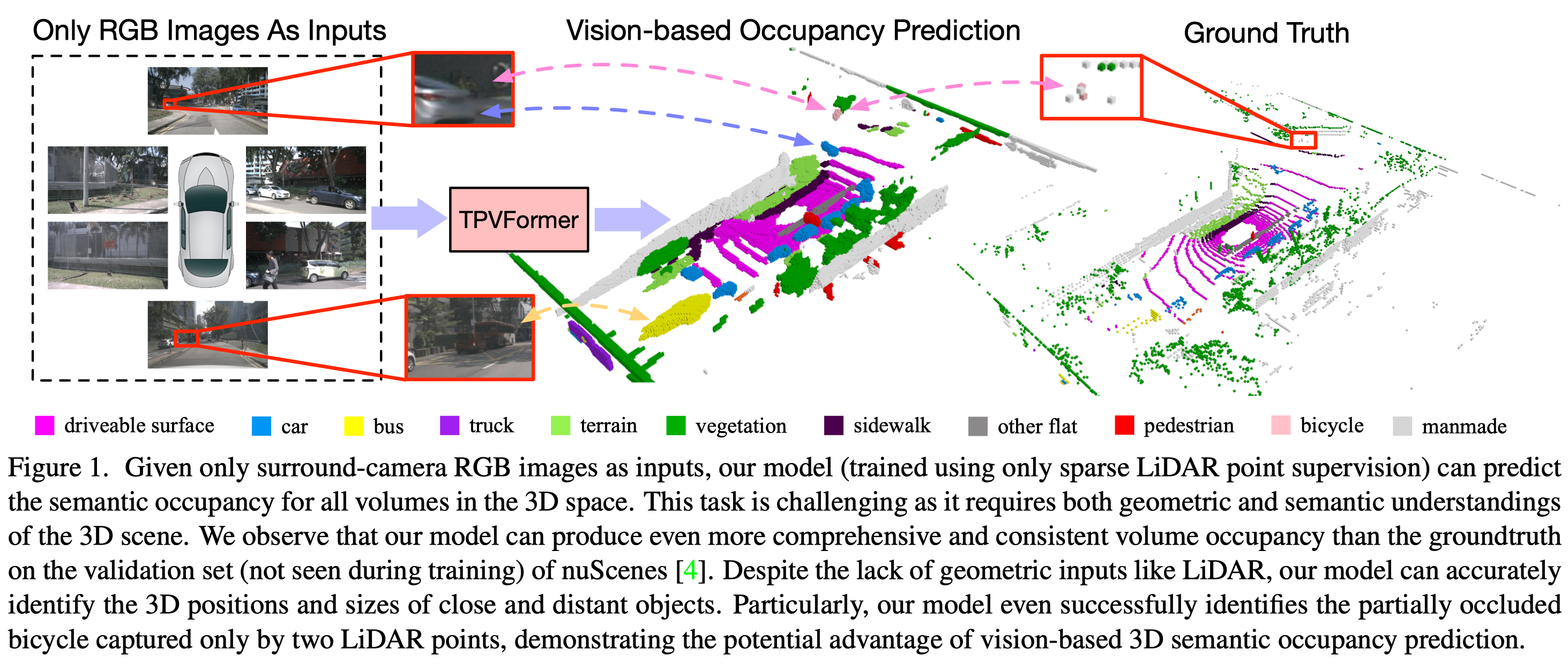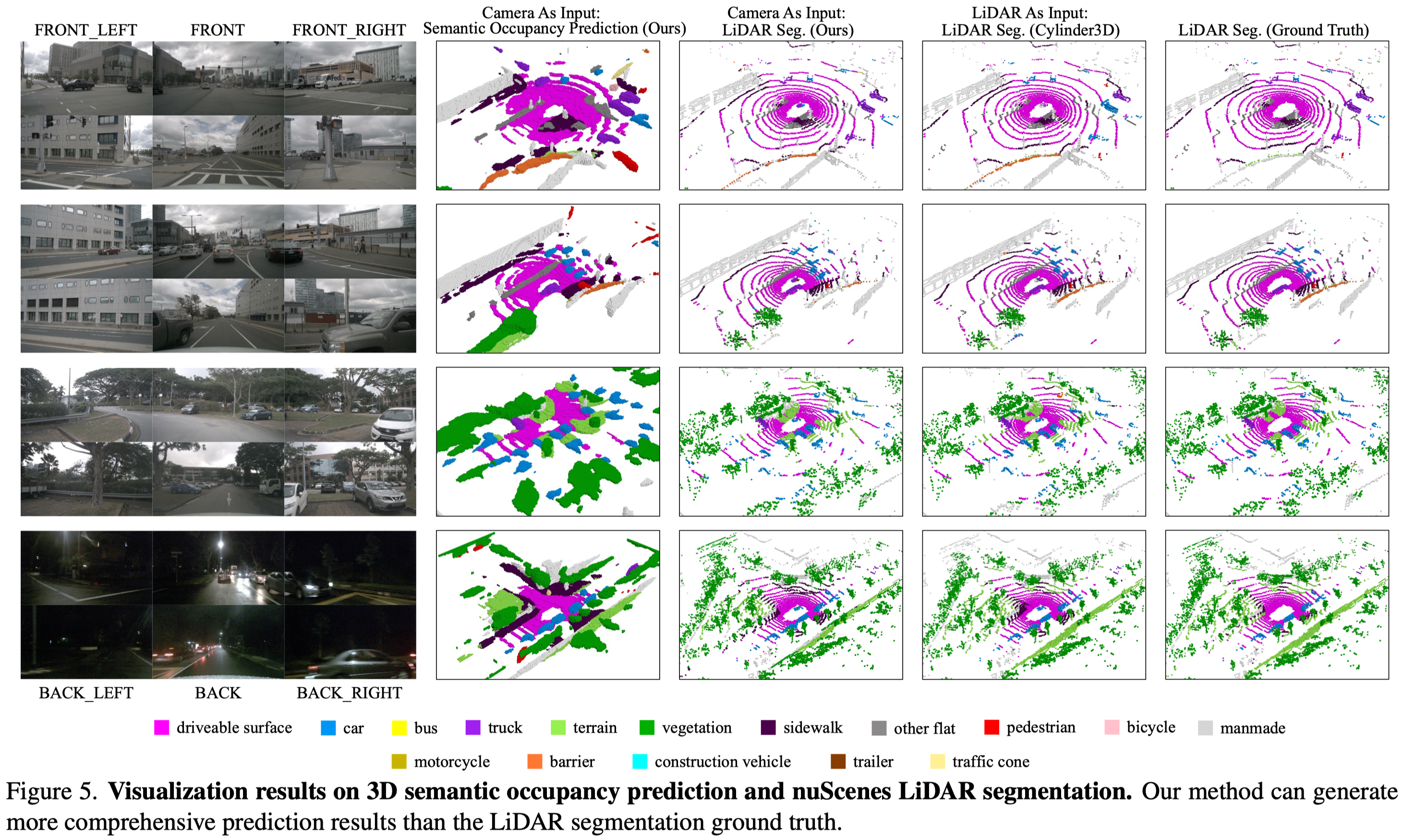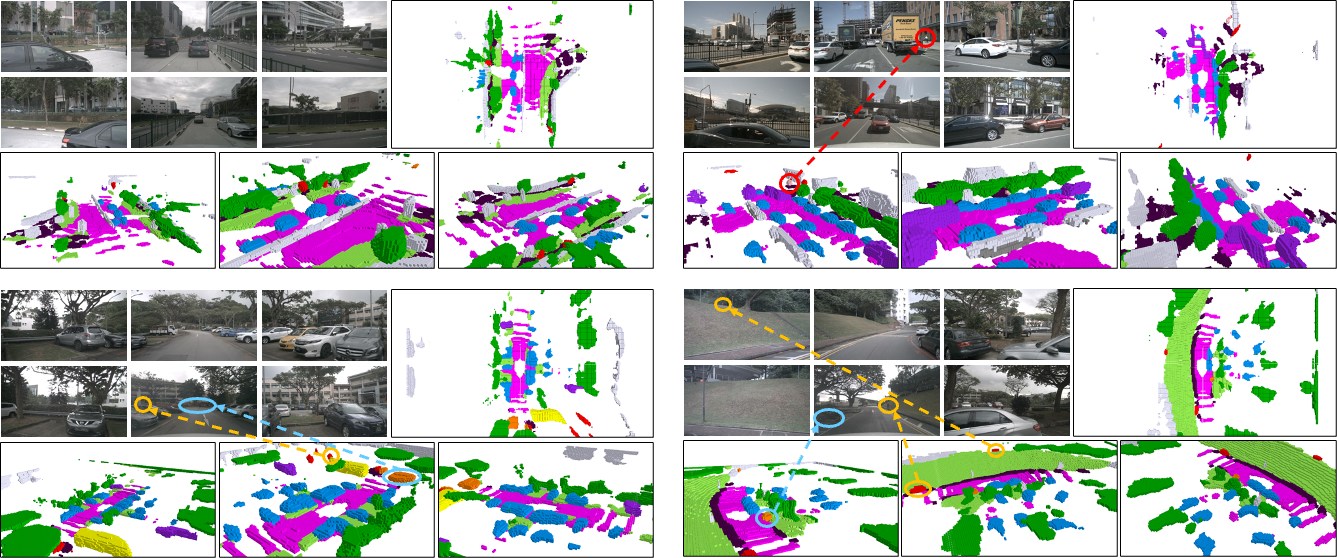Under construction.
Tri-Perspective View for Vision-Based 3D Semantic Occupancy Prediction
Yuanhui Huang*, Wenzhao Zheng*
$\dagger$ , Yunpeng Zhang, Jie Zhou, Jiwen Lu$\ddagger$
* Equal contribution
- [2023/2/16] Paper released on arXiv.
- [2023/2/12] Initial code release.
- [2022/11/20] Demo release.
A full demo video can be downloaded here.
Modern methods for vision-centric autonomous driving perception widely adopt the bird's-eye-view (BEV) representation to describe a 3D scene. Despite its better efficiency than voxel representation, it has difficulty describing the fine-grained 3D structure of a scene with a single plane. To address this, we propose a tri-perspective view (TPV) representation which accompanies BEV with two additional perpendicular planes. We model each point in the 3D space by summing its projected features on the three planes. To lift image features to the 3D TPV space, we further propose a transformer-based TPV encoder (TPVFormer) to obtain the TPV features effectively. We employ the attention mechanism to aggregate the image features corresponding to each query in each TPV plane. Experiments show that our model trained with sparse supervision effectively predicts the semantic occupancy for all voxels. We demonstrate for the first time that using only camera inputs can achieve comparable performance with LiDAR-based methods on the LiDAR segmentation task on nuScenes.
-
Create conda environment with python version 3.8
-
Install pytorch and torchvision with versions specified in requirements.txt
-
Follow instructions in https://mmdetection3d.readthedocs.io/en/latest/getting_started.html#installation to install mmcv-full, mmdet, mmsegmentation and mmdet3d with versions specified in requirements.txt
-
Install timm, numba and pyyaml with versions specified in requirements.txt
-
Download pretrain weights from https://github.com/zhiqi-li/storage/releases/download/v1.0/r101_dcn_fcos3d_pretrain.pth and put it in ckpts/
-
Create soft link from data/nuscenes to your_nuscenes_path
-
Download train/val pickle files and put them in data/ nuscenes_infos_train.pkl https://cloud.tsinghua.edu.cn/f/ede3023e01874b26bead/?dl=1 nuscenes_infos_val.pkl https://cloud.tsinghua.edu.cn/f/61d839064a334630ac55/?dl=1
- Train TPVFormer for lidar segmentation task on A100 with 40G GPU memory.
bash launcher.sh config/tpv_lidarseg.py out/tpv_lidarseg
- Train TPVFormer for lidar segmentation task on 3090 with 24G GPU memory.
bash launcher.sh config/tpv_lidarseg_dim96.py out/tpv_lidarseg_dim96
- Train TPVFormer for 3D semantic occupancy prediction task on 3090 with 24G GPU memory.
bash launcher.sh config/tpv04_occupancy.py out/tpv_occupancy --lovasz-input voxel
| Tesla's Occupancy Network | Our TPVFormer | |
|---|---|---|
| Volumetric Occupancy | Yes | Yes |
| Occupancy Semantics | Yes | Yes |
| #Semantics | >= 5 | 16 |
| Input | 8 camera images | 6 camera images |
| Training Supervision | Dense 3D reconstruction | Sparse LiDAR semantic labels |
| Training Data | ~1,440,000,000 frames | 28,130 frames |
| Arbitrary Resolution | Yes | Yes |
| Video Context | Yes | Not yet |
| Training Time | ~100,000 gpu hours | ~300 gpu hours |
| Inference Time | ~10 ms on the Tesla FSD computer | ~290 ms on a single A100 |
If you find this project helpful, please consider citing the following paper:
@article{huang2023tri,
title={Tri-Perspective View for Vision-Based 3D Semantic Occupancy Prediction},
author={Huang, Yuanhui and Zheng, Wenzhao and Zhang, Yunpeng and Zhou, Jie and Lu, Jiwen },
journal={arXiv preprint arXiv:2302.07817},
year={2023}
}






